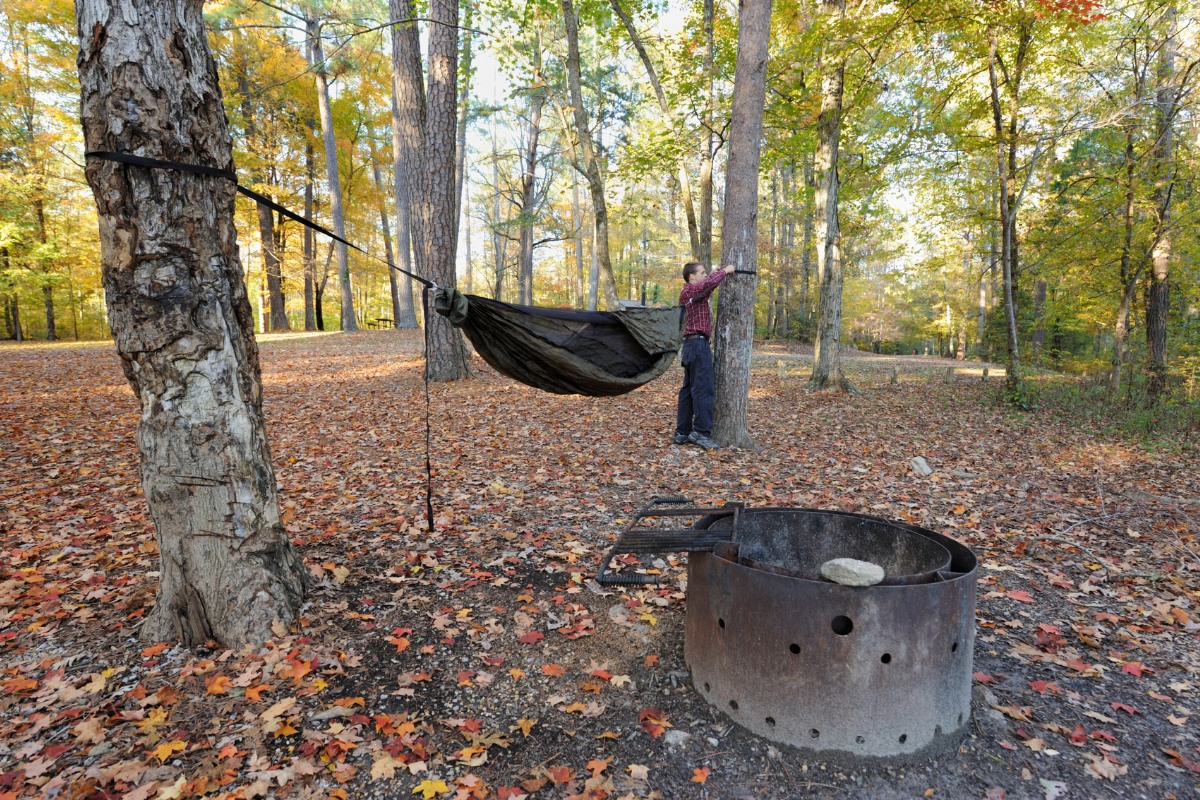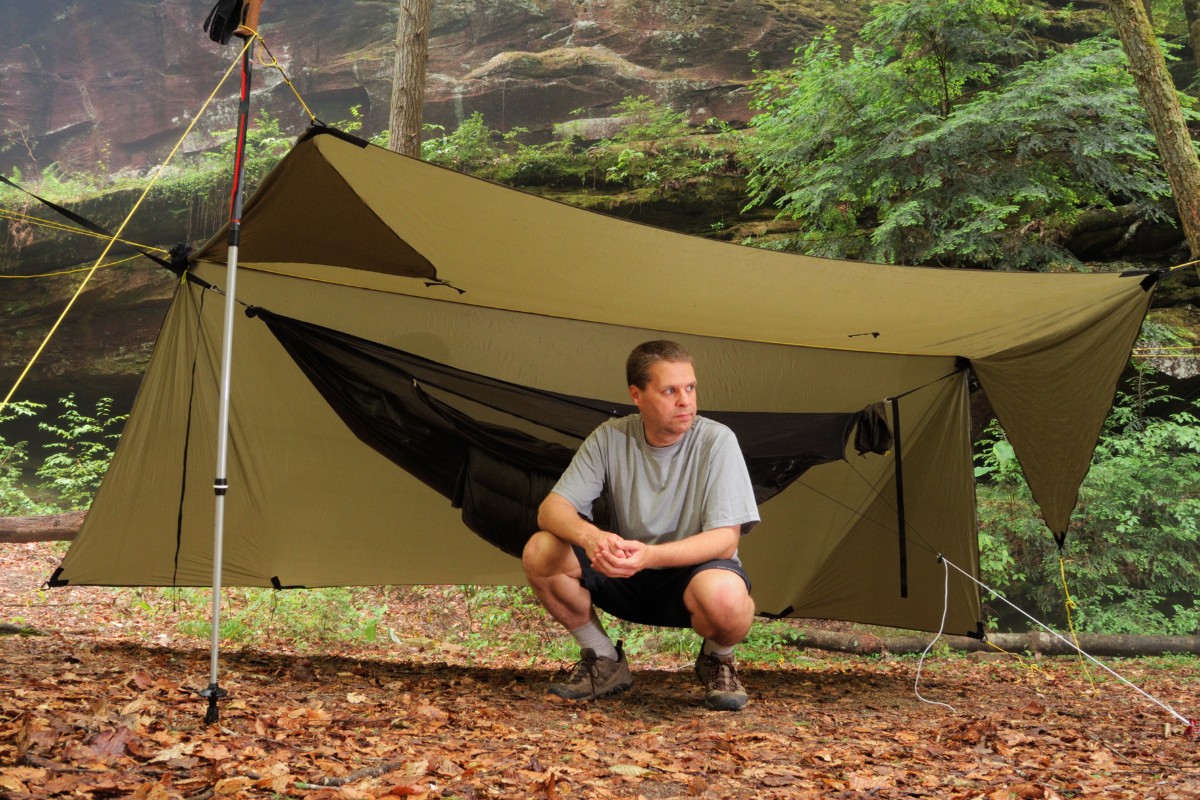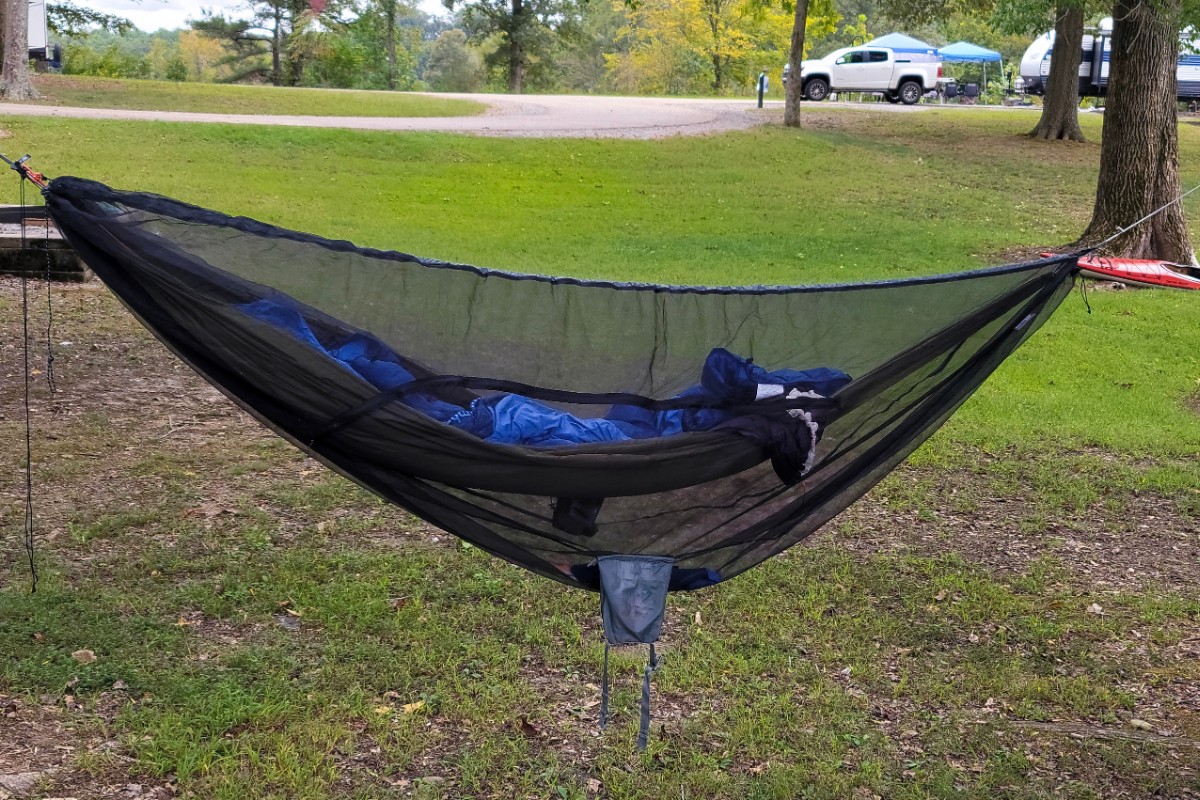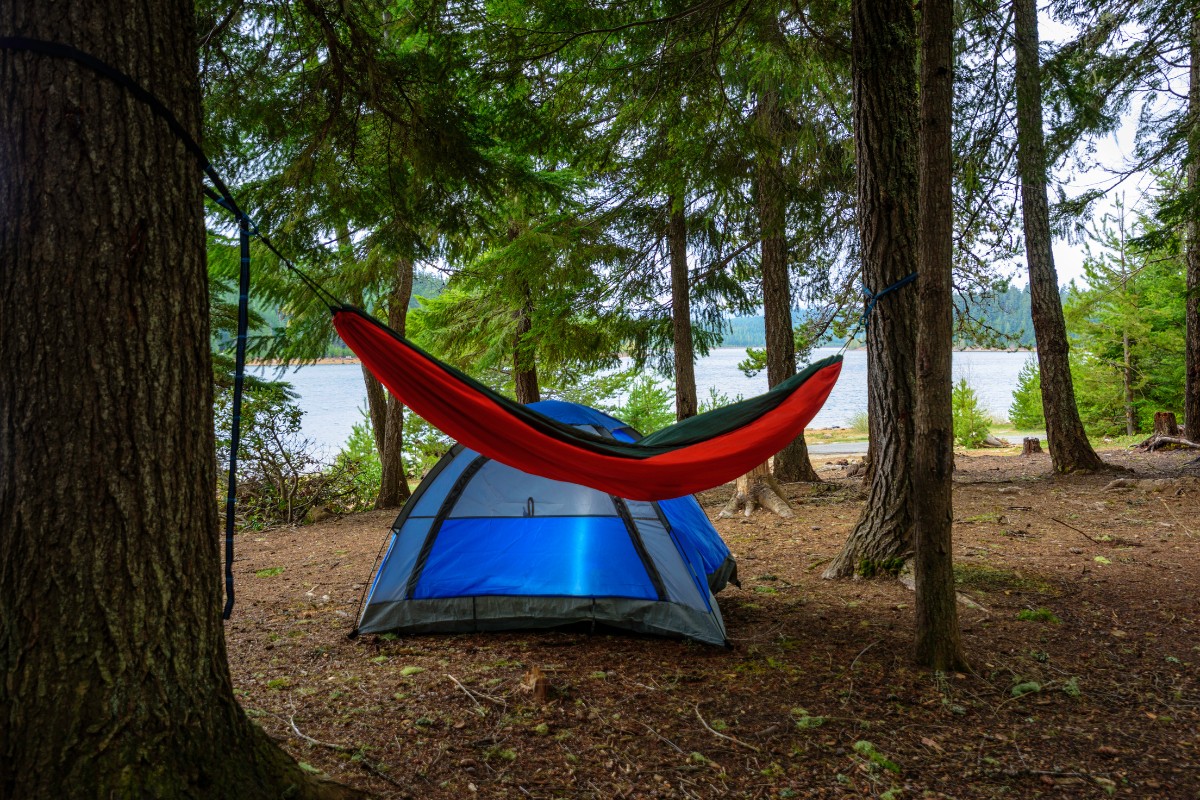Summer is nearly here, and there is nothing more relaxing or enjoyable than getting out in the open and spending a night under the stars. Camping is a fantastic way to get back to nature, reset our daily lives, and feel connected to Mother Earth.
Camping can happen in a variety of ways, with motorhomes giving a 5-star experience and easy-up tents making a quick and simple solution for short camping stays. Sleeping on the ground is never the most comfortable experience unless you have managed to bring camping mats and a range of bedding accessories, which is unlikely when hiking through the woods.
Camping hammocks are becoming a popular solution for a way to chill out and relax, as well as providing a superior portable sleeping experience. Hanging a camping hammock is easy once you know the necessary skills, but probably everyone has played out a comedy sketch when first trying to get in and out of a hammock – it can be a little bit tricky. Let’s take a look at how to hang a camping hammock.
Basic Hammock Hanging Considerations
There are some primary considerations when hanging your camping hammock to ensure that you get the best and most comfortable user experience. Whether you are setting your camping hammock up in the middle of a forest, in your backyard, on a porch, or between two tailgated cars, the principles are always the same.
You need to understand how far the attachment point should be, how high the suspension ropes need to be placed so that you have the correct seat height, and how much weight is going into the hammock. When all three of these things have been considered, you should end up with a nice loose curve with a 30-degree “hang angle,” which will give you the perfect position.
Hang Loose
One of the big mistakes first-time hammock users make is pulling the setup cord too tight while trying to make it as level as possible. People look at the curve in a hammock and think that the banana shape will be uncomfortable to lie in and bad for your posture. To combat this, they try to pull the hanging cords as tight as possible to create a level hammock (almost like tying the rope between 2 posts like a tennis net). This, however, makes your hammock restrictive and claustrophobic, as well as putting additional pressure on the hanging hooks.
To get a comfortable and relaxed fitting in your hammock, you need to let it hang loose. If you allow your hammock to hang loose, it will be roomier, more relaxed, and more comfortable.
The Hammock Angle
The hammock angle refers to two important angle considerations that you must make to get the best and most comfortable position. As we have already discussed, hanging loose is the key. You can visually see the correct position by looking at how the angle of the support straps are draped from the support post to the top of the hammock.
Try and aim for this angle to be about 30 degrees on each side. There’s a mathematical formula for working this out, but the best idea is to practice with trial and error so that you can visually take a gauge every time you need to. Essentially, the measurement is a function of the height that you have tied the support strings, the distance between the supports, and your final sitting height, which you should aim to be about 18 inches. When you look at this curve, it will look a little bit like a banana, and you may be thinking that it seems uncomfortable. However, the trick is how you sit in the hammock.
Instead of lying end-to-end in the middle of the hammock, the key to comfort and making the position of your body flatter is to turn your head and legs across the axis of the hammock by 30 degrees in opposite directions. The simple way to do this is by moving your feet 12 inches to the left or the right, and you will feel the tension in the hammock shift to support you.
As you move your feet, simultaneously your head will move in the opposite direction. This creates more stability and also allows the material to spread out and support you. It also reduces the angle that you are sitting at to a comfortable, flat posture. It sounds a little tricky, but in practice, it is perfectly stable and feels more natural when you are in this position.
Side Sleeper Pro
By hanging loose and shifting your body position across the hammock it opens up a whole range of different sleeping or chilling positions that would not be possible in a hammock that is set up incorrectly. In this loose and angled setup position, it is easy to accommodate sleeping on your side or snuggled up into the fetal position. The beauty of a hammock is that it removes the pressure of lying on the ground and allows you to relax in comfortable positions that contour your body’s natural curves. This gives you a fantastic night’s sleep or an afternoon snooze.
Practice Makes Perfect
Getting your hammock into the correct position takes a little bit of practice and will always require some fine-tuning, but some basic guidelines can help you get it right the first time. Generally speaking, a single-person hammock will need around 15 ft. of distance between the two hanging points.
Given that you want a final seat height of about 18 inches (which is the height of a regular chair) and you need the fixing rope to give you a 30-degree angle between the hammock and the post, then the rough guide would be to tie your fixing ropes around 50 inches from the ground. Factors that will require adjustment include the elasticity of the hanging strings and the weight of the person sitting in the hammock. But these adjustments are just fine-tuning.
Remember always to make sure that the hammock is attached securely to whatever fixing post you are using for safety.








